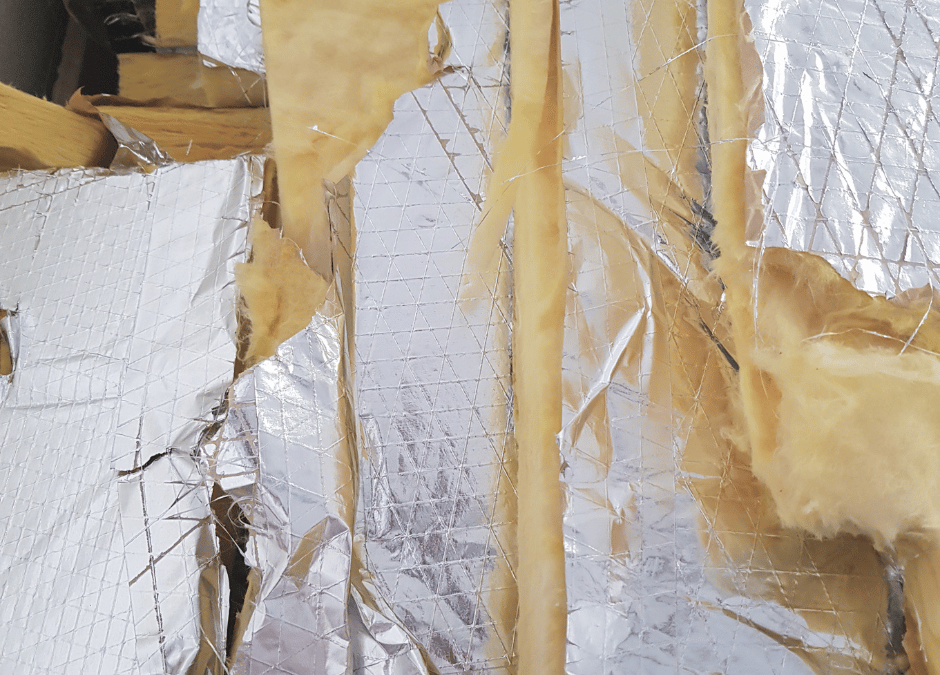Are you noticing unusually high energy bills or drafts in your home? It might be time to consider replacing your insulation. In this blog post, Rapid Insulation of Atlanta explores the signs that indicate your insulation may need an upgrade. We’ll guide you through understanding insulation degradation, common failure signs, and the benefits of timely replacement, ensuring your home remains comfortable and energy-efficient.
Understanding Insulation Degradation
Insulation materials can degrade over time, losing their effectiveness due to various environmental factors. Exposure to high temperatures, moisture, and physical disturbance can accelerate this degradation process. As the insulation’s performance diminishes, it may no longer provide adequate thermal resistance, leading to increased energy consumption and reduced comfort in your home. Identifying and addressing insulation degradation early can prevent costly energy bills and maintain the structural integrity of your home.
Common Signs of Insulation Failure
Insulation failure can manifest in several noticeable ways around your home. You might experience uneven heating or cooling, drafts, especially near windows and doors, or a noticeable increase in outside noise. During the winter, ice dams on the roof can indicate heat escaping due to inadequate insulation. In the summer, excessive heat in upstairs rooms can suggest that your attic insulation is failing. Recognizing these signs early can help you address insulation problems before they lead to significant energy loss.
Energy Bills Are Increasing
An unexplained increase in your energy bills often signals insulation problems. As insulation becomes less effective, your heating and cooling systems must work harder to maintain comfortable temperatures, thus consuming more energy. This increased workload can drive up your utility costs and wear out your HVAC system faster. If you notice a gradual increase in your energy costs without a corresponding change in utility rates or usage habits, it’s time to evaluate your insulation. Regular checks and updates to your insulation can help keep your energy costs under control.
Uncomfortable Indoor Temperatures
Failing insulation can lead to noticeable discomfort within your home. Areas that feel drafty in the winter or overly warm in the summer are signs that your insulation isn’t performing properly. This inconsistency can make your home less comfortable, forcing you to rely more on heating and cooling systems. If you find that adjusting your thermostat doesn’t solve temperature inconsistencies, it’s likely an insulation issue. Ensuring your insulation is in good condition helps maintain a consistent and comfortable indoor environment.
Physical Damage to Insulation
Physical damage to insulation, such as compression, water saturation, mold, and mildew growth, can significantly impair its effectiveness. Insulation that has been compacted will not perform well because air, which is a critical component of its insulative properties, has been squeezed out. Wet insulation can lead to mold issues while also reducing the R-value (resistance to heat flow). Inspecting your insulation regularly for these issues and replacing it if damage is extensive is important. This will help maintain its thermal performance and indoor air quality.
The Age of Your Insulation
The effectiveness of insulation is not just about its physical condition; age also plays a critical role. Insulation that is over 20 years old may not meet current energy efficiency standards and could be costing you more energy bills. Over time, materials can settle, compact, or simply degrade, reducing their insulative properties. Upgrading to newer, more efficient insulation can improve your home’s energy performance and reduce ongoing energy costs. An insulation upgrade can be a cost-effective way to enhance your home’s energy efficiency.
Pest Infestations in Insulation
Pests such as rodents, insects, and birds can severely damage insulation by burrowing, nesting, and leaving waste. This reduces the insulation’s effectiveness and can pose health risks due to contaminants. Signs of pest infestations include unusual noises, visible droppings, or disturbed insulation material. If you suspect a pest infestation, it’s crucial to address it quickly to prevent further damage and potential health issues. Professional pest control and insulation replacement might be necessary to restore the integrity of your insulation.
Moisture and Mold Issues
Moisture can be a significant problem for insulation, particularly in humid climates or areas of the home prone to dampness, such as basements and attics. When insulation becomes wet, it can clump and lose its effectiveness, and persistent moisture can lead to mold and mildew growth, posing health risks and damaging your home’s structure. If you notice signs of moisture or mold in your insulation, it is crucial to address these issues promptly. Removing the affected insulation and replacing it with new, moisture-resistant materials can protect your home and health.
Benefits of Replacing Your Insulation
Replacing your insulation offers numerous benefits, including improved energy efficiency, lower heating and cooling costs, and enhanced comfort. New insulation can help seal air leaks and regulate your home’s temperature more effectively. Additionally, modern insulation materials are more efficient and durable, providing better thermal resistance and potentially increasing your home’s value. Upgrading your insulation can also contribute to a healthier indoor environment by reducing the risks of mold and allergens.
Contact Us for Insulation Services


